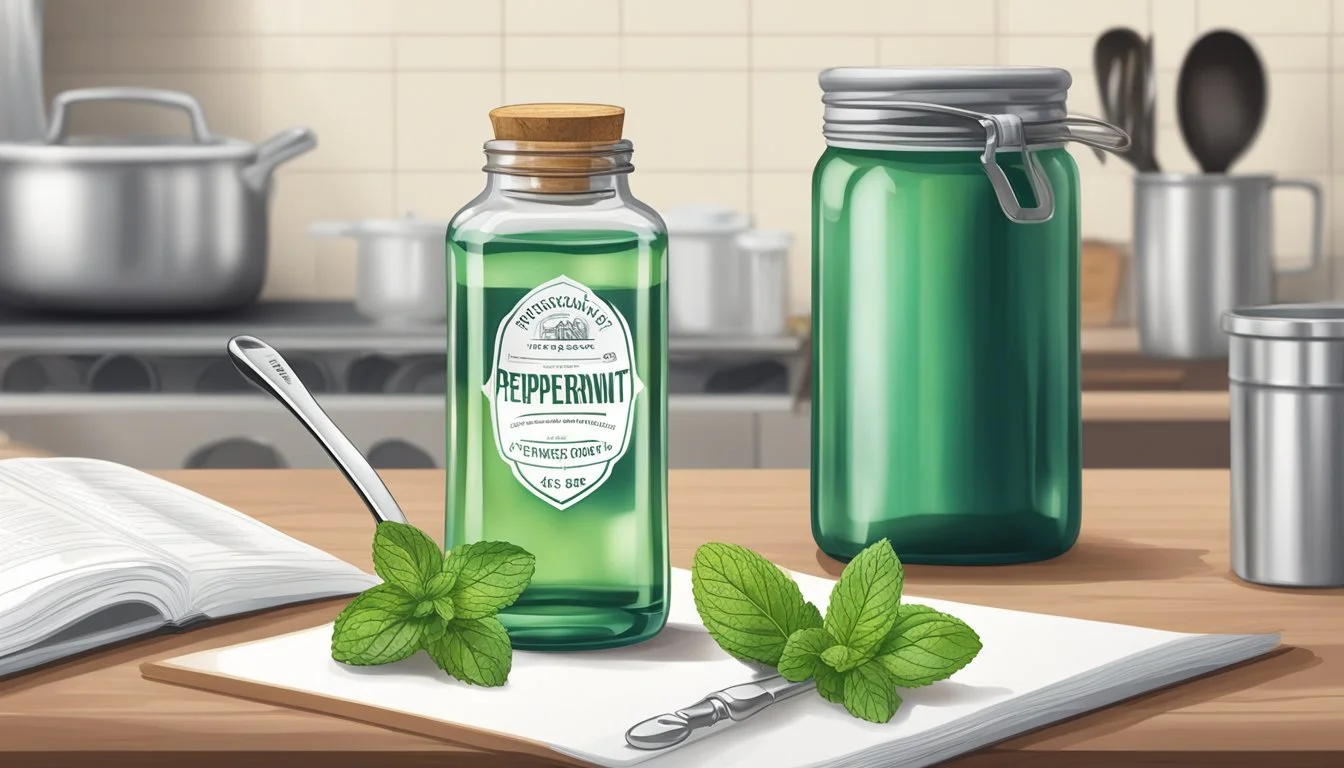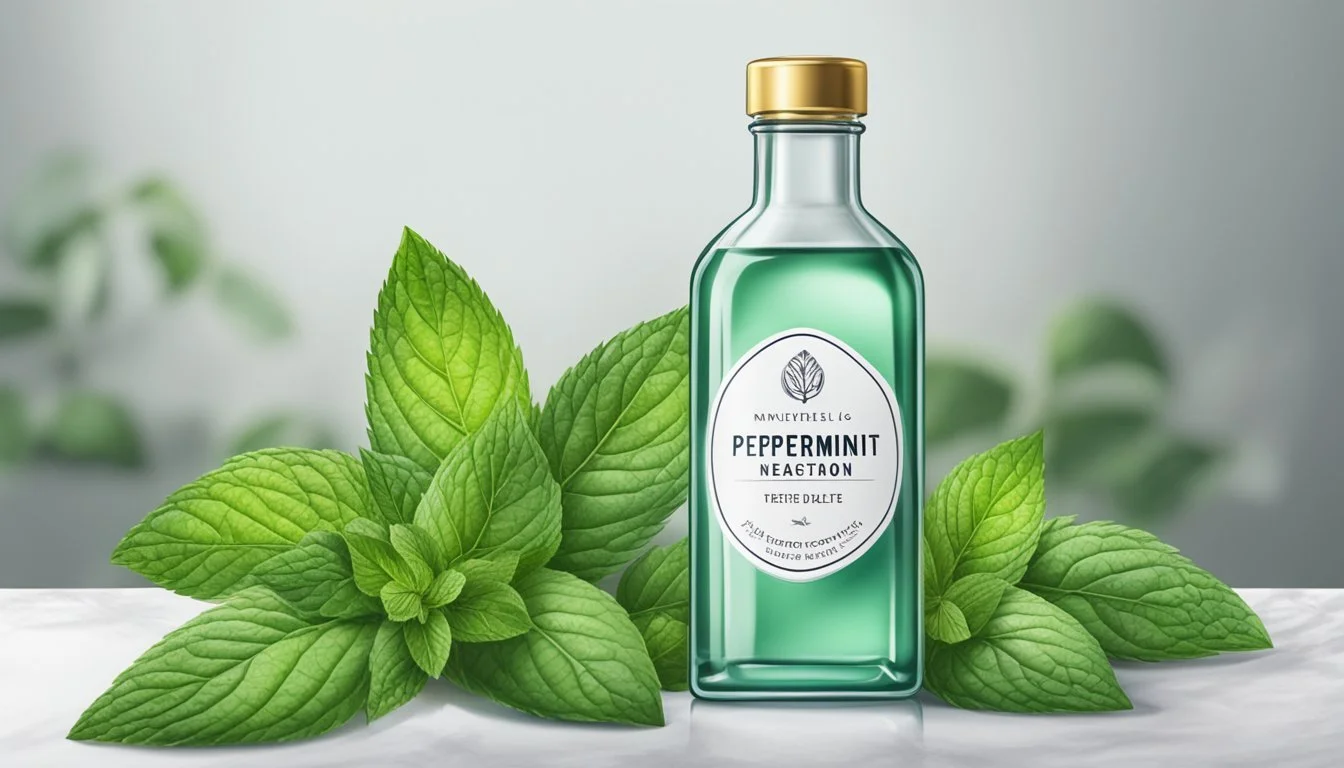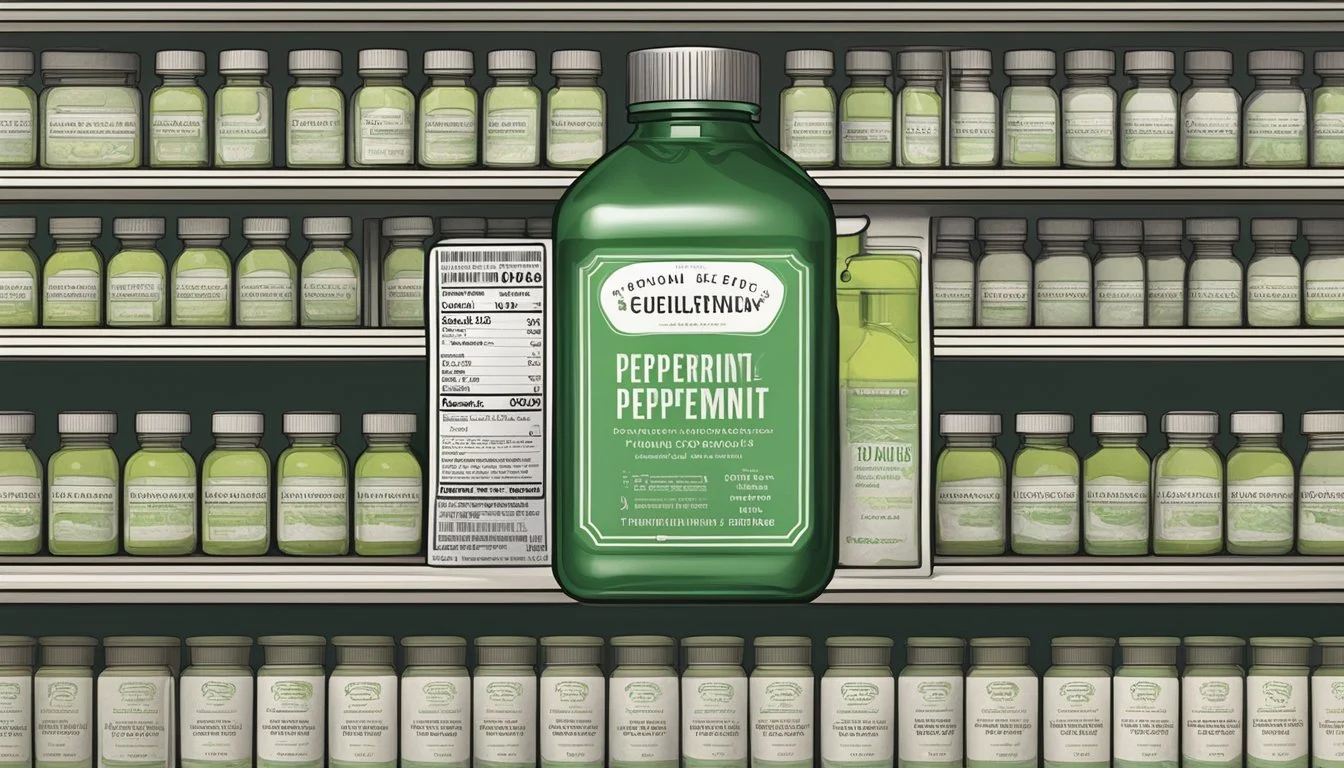How Long Does Peppermint Extract Last?
Shelf Life and Storage Tips
Peppermint extract, with its crisp and refreshing flavor, is a staple in various culinary applications from baking to beverage making. Its longevity is attributed to the alcohol content which serves as a natural preservative. Typically, an unopened bottle of peppermint extract can remain fresh for an estimated 3 to 5 years if stored properly. Once opened, it can still maintain its best quality for about 2 years.
Quality and flavor, however, are subject to the influence of storage conditions. A cool, dry place away from direct sunlight is ideal for retaining the extract's potency. The degradation of flavor and fragrance over time is a gradual process, and although an extract might lose some of its robustness, it generally remains safe to use past its expiration, provided it has been stored correctly.
Determining the usability of peppermint extract beyond these timeframes requires a simple evaluation. If the scent and taste remain strong, it likely indicates that the extract is still effective. Subtle changes in these areas may reduce the impact when used in recipes, without necessarily rendering the extract unusable.
Understanding Peppermint Extract
Peppermint extract serves as a potent flavoring agent derived from peppermint leaves, known for its distinct cooling sensation and high concentration of essential oils.
Components and Concentration
Peppermint extract is primarily composed of peppermint oil (how long does peppermint oil last?) and alcohol. The peppermint oil is extracted from peppermint leaves using a distillation process, which captures the natural essence and flavor of the herb. Peppermint essential oils are responsible for the extract's distinct minty taste and aroma. A typical bottle of peppermint extract might contain a significant percentage of alcohol, which acts as a solvent to maintain the peppermint oil in a usable liquid form. The concentration of peppermint oil in the extract greatly affects its potency and thus the quality of the flavor it imparts.
Potency: High concentration of peppermint oil ensures a stronger flavor.
Quality: Preserved best when stored properly, in a cool, dark environment.
Peppermint Extract Vs. Other Flavorings
Peppermint extract stands out among other flavorings due to its intense cooling sensation which is characteristic of natural mint. Unlike other extracts, the flavor of peppermint extract is sharp and easily identifiable, which can overpower other flavors if not used sparingly. Its potency is much greater than that of other mint flavorings, such as spearmint, and it should be used in concentration according to the desired intensity of flavor.
Substitute: In the absence of extract, peppermint oil can be used as a substitute, with a general guideline being 1/4 teaspoon of oil as the equivalent to 1 teaspoon of extract.
Natural Vs. Imitation: Natural peppermint extract is preferred for its pure and unadulterated flavor, whereas imitation or artificial extracts may contain synthetic flavors and lack the same potency and quality.
Storage Fundamentals
When storing peppermint extract, it's crucial to maintain its freshness, aroma, and taste through appropriate storage conditions, protection from temperature variations, and proper handling post-opening. Ensuring these factors can significantly extend the extract's shelf life.
Proper Storage Conditions
Peppermint extract retains its best quality when stored in a cool, dry place such as a cupboard away from heat sources. The extract should be kept in an airtight glass container to prevent the loss of its intense aroma and to maintain its color and appearance.
Effects of Temperature on Quality
High temperatures can degrade the peppermint extract, leading to a diminished taste and aroma. Therefore, room temperature, ideally between 60°F and 70°F (15°C and 21°C), is recommended for storing the extract to preserve its quality.
Shelf Life Post-Opening
Once opened, peppermint extract should be used within 1-2 years for optimal flavor. The freshness starts to decline beyond this period, though the extract may still be safe to consume. A tightly closed lid is essential to minimize the exposure to air.
Extending Shelf Life
To further extend the shelf life of peppermint extract beyond opening:
Keep the container tightly closed when not in use.
Use a clean implement each time to avoid introducing moisture.
Although not typically necessary, refrigerating or even freezing the extract can be considered, especially in warmer climates.
Usage and Potency
In terms of usage and potency, peppermint extract remains a versatile ingredient in cooking and aromatherapy. Its strength diminishes over time, affecting both flavor and efficacy.
Culinary Applications
Peppermint extract is widely used in baking and as a flavoring component in a variety of baked goods. When using in recipes, one must consider its potent flavor. It is generally used in small quantities, as overuse can overpower other ingredients. Here’s a quick guide to common culinary uses:
Baking: Ideal for adding a refreshing minty flavor to cakes, cookies, and frostings.
Candies: Essential for creating classic peppermint candies and chocolate treats.
Cocktails and Coffee: A dash can enhance beverages with a minty twist, pairing well with sweeter liquors or coffee drinks.
For freshness and taste, peppermint extract's potency is strongest when used within 1 to 2 years of opening. While it can last up to 3 to 4 years when properly stored, quality may diminish with time.
Aromatherapy and Other Uses
Apart from its culinary uses, peppermint extract also holds a place in aromatherapy and other non-food applications. Here’s how it performs in varying uses:
Aromatherapy: The extract is used for its soothing and refreshing properties. Its potency in this respect decreases gradually, necessitating more product to achieve the desired effect over time.
Other uses: In homemade toothpaste or personal care products, peppermint extract provides a cooling sensation and aroma, though effectiveness is contingent on the remaining potency.
As with flavorings, the longevity and effectiveness of peppermint extract in aromatherapy are tied to proper storage and timely use after opening.
Quality and Freshness Indicators
When determining the quality and freshness of peppermint extract, it's important to consider its appearance and aroma as these are key indicators of its potency and suitability for enhancing beverages and foods with its concentrated, refreshing flavor.
Assessing Extract Quality
The quality of peppermint extract can be gauged by its color and aroma. Fresh peppermint extract typically has a clear to slightly amber hue, and should emit a strong, refreshing peppermint smell that signifies its potency. Over time, color may slightly change, but it should remain relatively clear without any cloudiness. The taste is also a reliable indicator; it should be intensely minty and not dull. The aroma should be noticeably minty and refreshing—a lack of this vibrant aroma can indicate diminished quality. Always check the expiration date, but note that extracts can maintain their quality past this date if stored properly.
Appearance: Clear to slightly amber; no cloudiness
Aroma: Strong, refreshing peppermint smell
Taste: Intensely minty
Date: Refer to the expiration date but use sensory cues for quality after this period
Recognizing Signs of Spoilage
The signs of spoilage in peppermint extract are often evident through changes in smell, taste, and appearance. An off odor—that is, any smell that deviates from the characteristic minty scent—can indicate the extract has gone bad. Similarly, any change in flavor that results in a less minty or off-putting taste should be taken as a warning. Mold is a clear sign of spoilage, but it is rare in high-alcohol extracts; however, any visible growths or sediments should be treated as signs of deterioration. Discoloration is another cue; if the product turns a dark or murky color, it is best not to use it.
Smell: No off odors; should retain minty freshness
Taste: Should remain concentrated with a refreshing mint flavor
Appearance: No sediments or growths; consistent color without darkening
Safety and Best Practices
When it comes to peppermint extract, understanding its shelf life and adhering to consumption guidelines are paramount to ensure both its optimal flavor and safety.
Product Lifespan and Expiration
Peppermint extract, when unopened and stored properly, can maintain its best quality for about 3 to 4 years. Once opened, it should ideally be used within 1 to 2 years for peak flavor. The preservative qualities of the alcohol within the extract contribute to this prolonged shelf life. Manufacturers may provide an expiration date as a guide, but the actual shelf life can extend beyond this date if the product remains unspoiled and uncontaminated.
Freshness Indicator: Look for any changes in color, smell, or taste as indicators of quality.
Unopened vs. Opened: An unopened bottle remains at peak quality longer than an opened one.
Expiration Date: Treat this as the manufacturer's estimate of how long the product will remain at its best.
Health and Consumption Guidelines
The safety of consuming peppermint extract after its expiration date hinges on proper storage and visual inspection. Peppermint extract does not spoil like fresh food, but its potency deteriorates over time. Extracts should be kept in a cool, dry place, away from direct sunlight.
Health Considerations:
Some individuals may be sensitive to peppermints; hence, careful introduction into beverages or foods is recommended, especially for children.
The safety date may not be the same as the expiration date and consuming the extract beyond this date should be done with caution.
Proper Storage:
Containers: Always seal tightly to prevent evaporation and contamination.
Food Storage Information: Refer to FAQs or manufacturer's guidance for specifics.
It is advised that expired peppermint extract, if showing signs of spoilage or a decrease in quality, should be discarded to err on the side of safety.
Frequently Asked Questions
How long does peppermint extract last?
Typically, an unopened bottle of peppermint extract can last up to 4 years, due to the alcohol acting as a preservative. Once opened, it should be used within 1-2 years for optimal flavor.
What are the ideal storage conditions for peppermint extract?
Peppermint extract should be stored in a cool, dry place away from direct sunlight and heat. It's best kept in an airtight container to limit exposure to air, which can diminish its potency.
How can I tell if peppermint extract has expired?
Over time, peppermint extract may lose its refreshing aroma and flavor intensity. If the smell is off or the flavor is weak, it's time to replace it.
What substitutes can be used for peppermint extract?
If peppermint extract is unavailable, a substitute like 1/4 teaspoon of peppermint oil or other flavoring extracts like spearmint or lemon may be used, though they will impart different nuances.
Do imitation flavor extracts last the same amount of time as pure extracts?
Imitation extracts often have a similar shelf life to pure extracts. However, pure extracts, like Mexican vanilla or maple, may have varying longevity and can sometimes improve with age, unlike their imitation counterparts.
Is it safe to use peppermint extract after the 'best by' date?
Peppermint extract is generally safe to use after the 'best by' date, but its quality in terms of flavor and aroma might not be at its best.
Can peppermint extract be used for aromatherapy? Peppermint extract is primarily used for culinary purposes, but for a more concentrated aroma suitable for aromatherapy, one should consider using peppermint essential oil instead.







